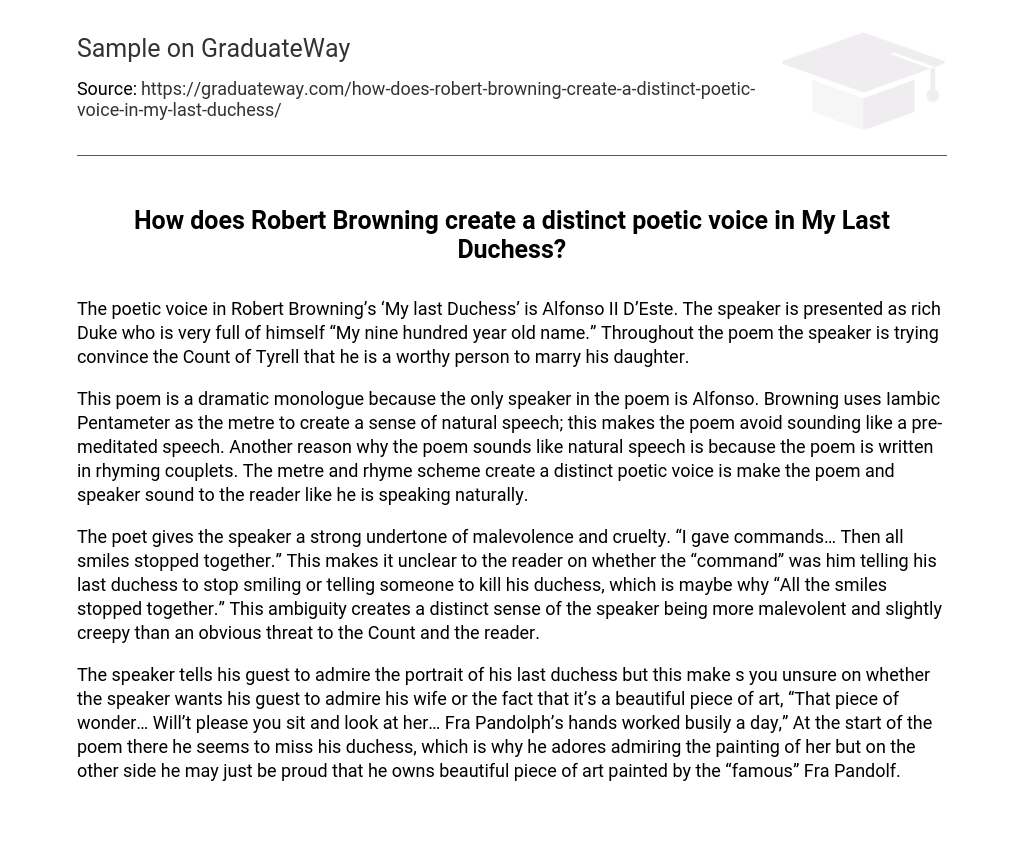The poem “My Last Duchess” by Robert Browning depicts the arrogant Duke Alfonso II D’Este. The speaker, a wealthy nobleman, takes great pride in his long-standing lineage, declaring “My nine hundred year old name.” Throughout the poem, the Duke endeavors to persuade the Count of Tyrell that he is a suitable match for his daughter.
The poem, written from Alfonso’s perspective, is a dramatic monologue. Browning’s use of Iambic Pentameter as the metre contributes to a natural speech rhythm, preventing the poem from sounding rehearsed. Furthermore, the poem employs a rhyming couplet structure, enhancing the perception of natural speech. The combination of metre and rhyme scheme yields a distinct poetic voice that resonates with readers as authentic conversation.
The poet implies a sense of malevolence and cruelty towards the speaker. The line “I gave commands… Then all smiles stopped together.” leaves the reader uncertain whether the command refers to the speaker instructing his last duchess to cease smiling or ordering someone to kill her. This ambiguity results in the speaker being perceived as more sinister and unsettling, rather than merely a clear threat to the Count and the reader.
The speaker invites his guest to appreciate the portrait of his late duchess, creating ambiguity as to whether he desires admiration for his wife or simply acknowledges the artwork’s beauty. He states, “That piece of wonder… Will’t please you sit and look at her… Fra Pandolph’s hands worked busily a day.” Initially, it appears that the speaker longs for his duchess, thus his fondness for gazing at her painting. Alternatively, he might take pride in possessing a magnificent artwork crafted by the renowned Fra Pandolf.





